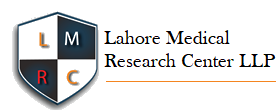Age and Gender Specific Associations between Hyperuricemia and Hypertension: A Cross-Sectional Study in Karachi
Age and Gender Specific Associations between Hyperuricemia and Hypertension
DOI:
https://doi.org/10.54393/pjhs.v6i6.3086Keywords:
Hyperuricemia, Hypertension, Serum Uric Acid, Anthropometric Indices, Gender, AgeAbstract
Hyperuricemia is increasingly linked to hypertension and various metabolic disorders. Objectives: To investigate the relationship between hyperuricemia and various anthropometric indices among individuals newly diagnosed with hypertension, with an emphasis on identifying potential age- and gender-specific patterns. Methods: The cross-sectional study enrolled 370 newly diagnosed hypertensive adults (230 male and 140 female), aged 18 years and above, using stratified sampling. Anthropometric data, blood pressure, and serum uric acid levels were recorded. Serum uric acid (SUA) levels above 7 mg/dL in males and above 6 mg/dL in females were used to define hyperuricemia. SPSS version 22.0 was used for statistical analysis. Independent t-tests, Pearson's correlation, Chi-square tests, and ANOVA were applied to analyze the data, with a significance level of p<0.05. Results: The research found a 27.5% prevalence of hyperuricemia, significantly higher in male (33.9%) than female (17.1%) (p<0.001). Male had significantly elevated systolic BP (p=0.043), waist circumference (p<0.001), and serum uric acid levels (p<0.001). Serum uric acid showed positive correlations with systolic BP (p=0.001), diastolic BP (p=0.007), BMI (p<0.001), waist circumference (p<0.001), and age (p=0.024). Hyperuricemic individuals had significantly higher age, BP, BMI, and waist circumference (all p<0.01). Females with hyperuricemia were older (p=0.04) and more frequently in the >50 age group (p=0.036). Conclusions: It was concluded that male showed a higher prevalence of hyperuricemia, while older age was a significant factor for females. These findings suggest the importance of monitoring serum uric acid as an early marker for cardiovascular and metabolic risks, particularly in populations at risk based on gender and age.
References
Arnett DK, Blumenthal RS, Albert MA, Buroker AB, Goldberger ZD, Hahn EJ et al. 2019 ACC/AHA guideline on the primary prevention of cardiovascular disease: a report of the American College of Cardiology/American Heart Association Task Force on Clinical Practice Guidelines. Journal of the American College of Cardiology. 2019 Sep; 74(10): e177-232.
Bakris G, Ali W, Parati G. ACC/AHA versus ESC/ESH on hypertension guidelines: JACC guideline comparison. Journal of the American College of Cardiology. 2019 Jun; 73(23): 3018-26. doi: 10.1016/j.jacc.2019.03.507. DOI: https://doi.org/10.1016/j.jacc.2019.03.507
Zhou B, Carrillo-Larco RM, Danaei G, Riley LM, Paciorek CJ, Stevens GA et al. Worldwide trends in hypertension prevalence and progress in treatment and control from 1990 to 2019: a pooled analysis of 1201 population-representative studies with 104 million participants. The Lancet. 2021 Sep; 398(10304): 957-80.
Mubarik S, Malik SS, Mubarak R, Gilani M, Masood N. Hypertension associated risk factors in Pakistan: A multifactorial case-control study. Journal of the Pakistan Medical Association. 2019 Aug; 69(8): 1070-3.
Copur S, Demiray A, Kanbay M. Uric acid in metabolic syndrome: does uric acid have a definitive role? European Journal of Internal Medicine. 2022 Sep; 103: 4-12. doi: 10.1016/j.ejim.2022.04.022. DOI: https://doi.org/10.1016/j.ejim.2022.04.022
Borghi C, Agnoletti D, Cicero AF, Lurbe E, Virdis A. Uric acid and hypertension: a review of evidence and future perspectives for the management of cardiovascular risk. Hypertension. 2022 Sep; 79(9): 1927-36. doi: 10.1161/HYPERTENSIONAHA.122.17956. DOI: https://doi.org/10.1161/HYPERTENSIONAHA.122.17956
Gherghina ME, Peride I, Tiglis M, Neagu TP, Niculae A, Checherita IA. Uric acid and oxidative stress—relationship with cardiovascular, metabolic, and renal impairment. International Journal of Molecular Sciences. 2022 Mar; 23(6): 3188. doi: 10.3390/ijms23063188. DOI: https://doi.org/10.3390/ijms23063188
Hussain M, Ghori MU, Aslam MN, Abbas S, Shafique M, Awan FR. Serum uric acid: an independent risk factor for cardiovascular disease in Pakistani Punjabi patients. BioMed Central Cardiovascular Disorders. 2024 Oct; 24(1): 546. doi: 10.1186/s12872-024-04055-y. DOI: https://doi.org/10.1186/s12872-024-04055-y
Rezaei MR, Khaledi M, Rezaei B, Farnia MR, Rafiei H, Moradi S et al. The association between hyperuricemia and the risk of acute kidney injury; a systematic review and meta-analysis. Journal of Nephropharmacology. 2023 May; 12(2): e10590-. doi: 10.34172/npj.2023.10590. DOI: https://doi.org/10.34172/npj.2023.10590
Kim W, Go TH, Kang DO, Lee J, Choi JY, Roh SY et al. Age and sex dependent association of uric acid and incident hypertension. Nutrition, Metabolism and Cardiovascular Diseases. 2021 Apr; 31(4): 1200-8. doi: 10.1016/j.numecd.2020.12.015. DOI: https://doi.org/10.1016/j.numecd.2020.12.015
Han Y, Han K, Han X, Yin Y, Di H, Wu J et al. Serum uric acid might be positively associated with hypertension in Chinese adults: an analysis of the China Health and Nutrition Survey. Frontiers in Medicine. 2022 Jan; 8: 755509. doi: 10.3389/fmed.2021.755509. DOI: https://doi.org/10.3389/fmed.2021.755509
Te Kampe R, Janssen M, van Durme C, Jansen TL, Boonen A. Sex differences in the clinical profile among patients with gout: cross-sectional analyses of an observational study. The Journal of Rheumatology. 2021 Feb; 48(2): 286-92. doi: 10.3899/jrheum.200113. DOI: https://doi.org/10.3899/jrheum.200113
Raya-Cano E, Vaquero-Abellán M, Molina-Luque R, De Pedro-Jiménez D, Molina-Recio G, Romero-Saldaña M. Association between metabolic syndrome and uric acid: a systematic review and meta-analysis. Scientific Reports. 2022 Nov; 12(1): 18412. doi: 10.1038/s41598-022-22025-2. DOI: https://doi.org/10.1038/s41598-022-22025-2
Tariq M, Ud Din MA, Mustafa ZU, Rana SA, Kazmi R, Qamar A et al. Assessment of the Risk Factors of Hypertension Among Adults in Pakistan. Pakistan Armed Forces Medical Journal. 2023 Aug; 73. doi: 10.51253/pafmj.v73iSUPPL-1.3910. DOI: https://doi.org/10.51253/pafmj.v73iSUPPL-1.3910
Du L, Zong Y, Li H, Wang Q, Xie L, Yang B et al. Hyperuricemia and its related diseases: mechanisms and advances in therapy. Signal Transduction and Targeted Therapy. 2024 Aug; 9(1): 212. doi: 10.1038/s41392-024-01916-y. DOI: https://doi.org/10.1038/s41392-024-01916-y
Yu W and Cheng JD. Uric acid and cardiovascular disease: an update from molecular mechanism to clinical perspective. Frontiers in Pharmacology. 2020 Nov; 11: 582680. doi: 10.3389/fphar.2020.582680. DOI: https://doi.org/10.3389/fphar.2020.582680
Lin X, Wang X, Li X, Song L, Meng Z, Yang Q et al. Gender‐and Age‐Specific Differences in the Association of Hyperuricemia and Hypertension: A Cross‐Sectional Study. International Journal of Endocrinology. 2019; 2019(1): 7545137. doi: 10.1155/2019/7545137. DOI: https://doi.org/10.1155/2019/7545137
Liu D, Zheng X, Zhu J, Yang J, Lu L, Ji X et al. Gender-specific association between serum uric acid levels and hypertension in East China: a cross-sectional study. BioMed Central Public Health. 2025 Dec; 25(1): 1-3. doi: 10.1186/s12889-025-22064-0. DOI: https://doi.org/10.1186/s12889-025-22064-0
Dório M, Benseñor IM, Lotufo P, Santos IS, Fuller R. Reference range of serum uric acid and prevalence of hyperuricemia: a cross-sectional study from baseline data of ELSA-Brasil cohort. Advances in Rheumatology. 2022 May; 62: 15. doi: 10.1186/s42358-022-00246-3. DOI: https://doi.org/10.1186/s42358-022-00246-3
Naseem R, Zafar SM, Jawed S, Mukhtar S, Ijaz F, Aftab RK. Influence of serum estradiol on serum uric acid level in pre and postmenopausal women. The Professional Medical Journal. 2019 Sep; 26(09): 1587-91. doi: 10.29309/TPMJ/2019.26.09.3720. DOI: https://doi.org/10.29309/TPMJ/2019.26.09.3720
She D, Wang Y, Liu J, Luo N, Feng S, Li Y et al. Changes in the prevalence of hyperuricemia in clients of health examination in Eastern China, 2009 to 2019. BioMed Central Endocrine Disorders. 2022 Aug; 22(1): 202. doi: 10.1186/s12902-022-01118-z. DOI: https://doi.org/10.1186/s12902-022-01118-z
Guo Q, Liu Y, Feng X, Yang J, Zhai G, Zhou Y. Serum uric acid and hyperuricemia associate with coronary artery disease among postmenopausal women. Reviews in Cardiovascular Medicine. 2022 Jun; 23(7): 222. doi: 10.31083/j.rcm2307222. DOI: https://doi.org/10.31083/j.rcm2307222
Quartey P, Owusu BA, Marfo L, Appiah E. Relationship between uric acid, blood pressure and anthropometric indices in a healthy Ghanaian adult population. International Journal of Research in Medical Sciences. 2020 Dec; 8(12): 4185. doi: 10.18203/2320-6012.ijrms20205286. DOI: https://doi.org/10.18203/2320-6012.ijrms20205286
Li Q, Li R, Zhang S, Zhang Y, Liu M, Song Y et al. Relation of BMI and waist circumference with the risk of new-onset hyperuricemia in hypertensive patients. QJM: An International Journal of Medicine. 2022 May; 115(5): 271-8. doi: 10.1093/qjmed/hcaa346. DOI: https://doi.org/10.1093/qjmed/hcaa346
Hong C, Zhang Q, Chen Y, Lu Y, Chen L, He Y et al. Elevated uric acid mediates the effect of obesity on hypertension development: a causal mediation analysis in a prospective longitudinal study. Clinical Epidemiology. 2022 Apr: 463-73. doi: 10.2147/CLEP.S363429. DOI: https://doi.org/10.2147/CLEP.S363429
Downloads
Published
How to Cite
Issue
Section
License
Copyright (c) 2025 Pakistan Journal of Health Sciences

This work is licensed under a Creative Commons Attribution 4.0 International License.
This is an open-access journal and all the published articles / items are distributed under the terms of the Creative Commons Attribution License, which permits unrestricted use, distribution, and reproduction in any medium, provided the original author and source are credited. For comments













